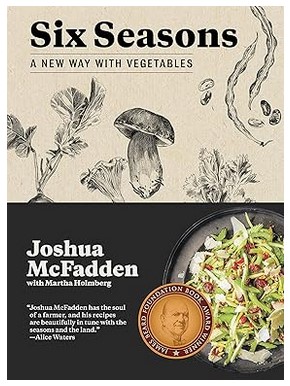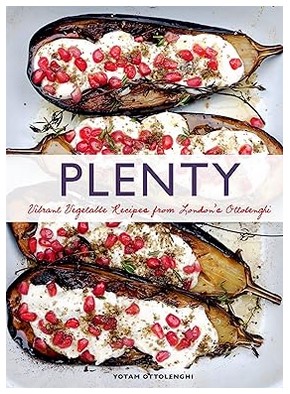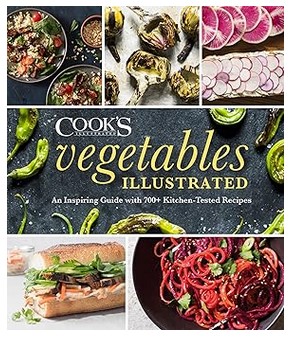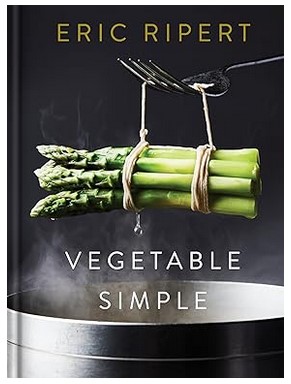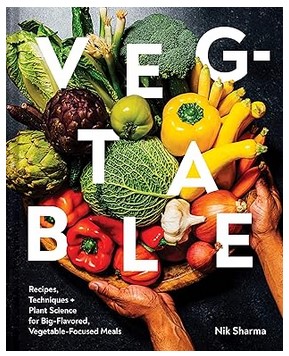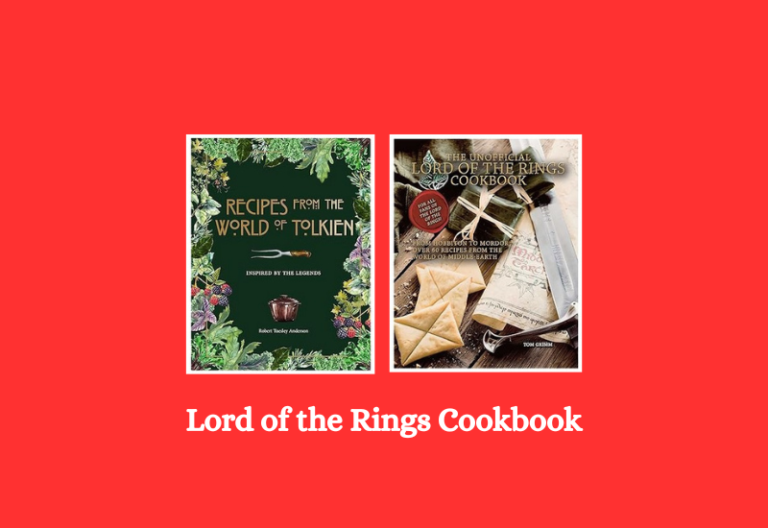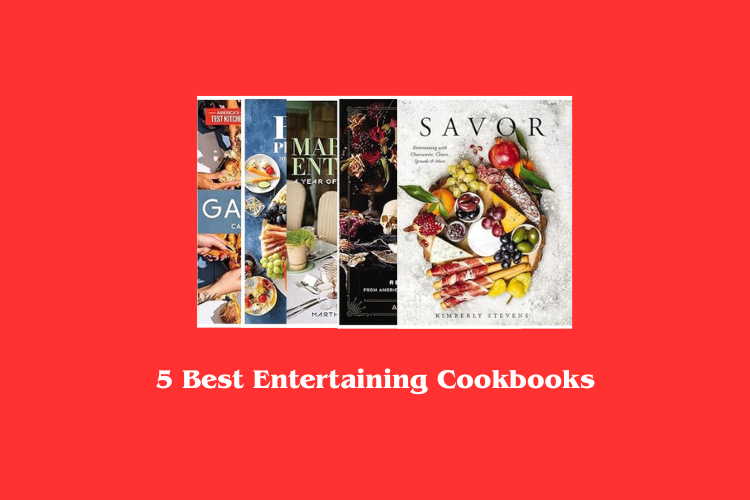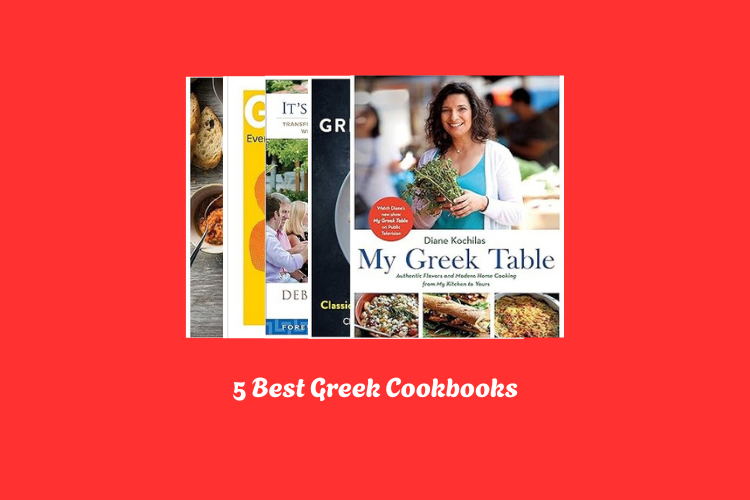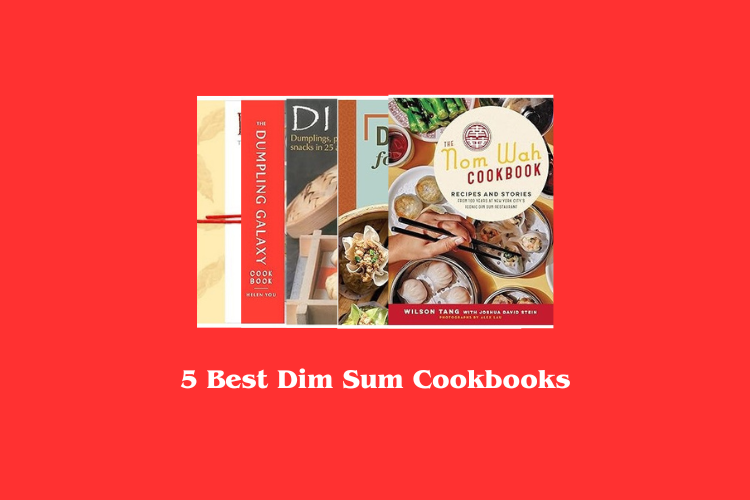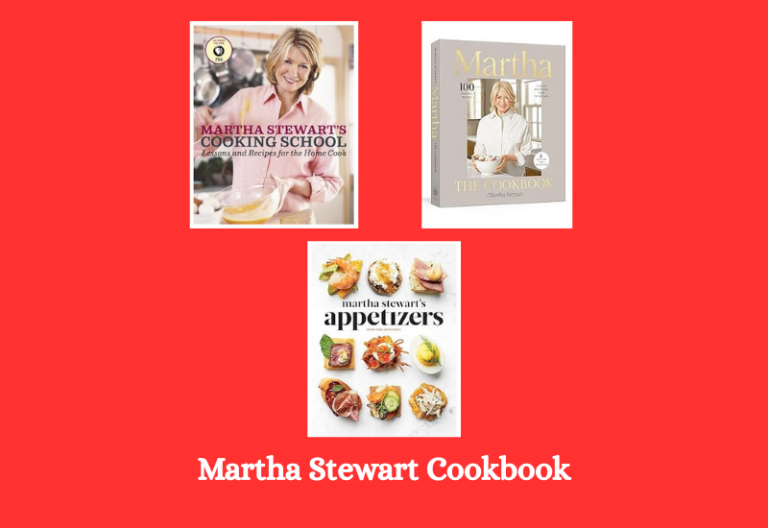5 Best Cookbooks for Vegetables That Make Every Meal Exciting
Vegetables hold the power to turn simple meals into vibrant, flavorful dishes. From crisp salads to hearty roasted favorites, cooking with fresh produce can excite the taste buds and nourish the body.
The right cookbook can unlock the full potential of vegetables, offering innovative recipes, clever techniques, and flavor combinations that bring out the best in every ingredient. Some cookbooks focus on seasonal produce, helping you enjoy vegetables at their peak.
Others introduce global flavors, spices, and cooking methods that elevate everyday meals. These books do more than just list recipes they inspire creativity in the kitchen and encourage a healthy, balanced lifestyle.
Exploring different cookbooks for vegetables opens doors to culinary adventures, whether preparing a quick weeknight dinner or hosting a festive gathering.
This guide highlights five standout cookbooks that make vegetables the star of every plate, offering fresh ideas and approachable recipes for every home cook.
5 Best Cookbooks for Vegetables 2025
1.
Cookbook Overview
Author Background
Joshua McFadden is a chef and farmer. He owns Ava Gene’s, a well-known trattoria in Portland, Oregon. Before that, he worked at top restaurants in New York City, including Lupa, Momofuku, and Blue Hill. His time at Four Season Farm in Maine taught him how to make the most of every part of a vegetable. McFadden’s approach combines practical farming knowledge with expert cooking skills.
Book Concept
Six Seasons organizes vegetables by their natural growing seasons. The book starts with spring vegetables and moves through summer, late summer, autumn, and winter.
Each season gets a detailed chapter showing how to enjoy vegetables at their peak. Recipes start simple, often using raw ingredients, and then move to cooking methods like grilling, steaming, sautéing, pan roasting, braising, and stewing.
Awards and Recognition
This cookbook has earned widespread praise:
-
James Beard Award for Best Vegetable-Focused Cooking
-
Best Cookbook of the Year by Wall Street Journal, Bon Appétit, and Food Network Magazine
-
Featured in The Strategist’s Nonobvious Wedding Gift Guide
Critics highlight how the book combines simplicity with deep flavor. Recipes use few ingredients but deliver maximum enjoyment.
Recipe Categories
Raw and Fresh Dishes
Each chapter begins with raw vegetable recipes. These dishes focus on seasonal freshness and natural flavors. Readers learn to prepare salads, slaws, and lightly dressed vegetable plates that taste bright and crisp.
Grilled, Steamed, and Sautéed
McFadden includes recipes that add heat to vegetables. Grilling brings smoky flavor. Steaming keeps vegetables tender. Sautéing or pan-roasting adds richness and aroma. These methods show how to make vegetables interesting even without meat.
Braises, Stews, and Hearty Meals
Late-season vegetables often go into more substantial dishes. Braises and stews create comforting meals while keeping vegetables as the star. Recipes combine heat, spice, acid, and fat to transform less-than-perfect produce into tasty dishes.
Seasonal Highlights
Each vegetable is shown at its best stage. Spring recipes might feature fresh asparagus or peas. Summer recipes include tomatoes and zucchini. Autumn dishes highlight squash, cabbage, and root vegetables. Winter recipes focus on hearty, earthy vegetables like kale, carrots, and beets.
Features
Clear Instructions
Recipes in Six Seasons are simple to follow. Step-by-step instructions guide readers from raw prep to cooked dishes. Beginners can follow them without confusion, while experienced cooks can explore flavor combinations.
Minimal Ingredients
Most recipes use few ingredients but emphasize flavor. McFadden focuses on letting vegetables shine. Spices, acids, and cooking techniques enhance taste naturally.
Seasonal Organization
The book’s structure makes it easy to cook with what’s fresh. Each season has its own chapter, helping cooks plan meals around the best produce.
Practical Tips
McFadden offers tips on choosing vegetables, storing them, and using every part. He shows how to turn even slightly old or overlooked vegetables into delicious meals.
Versatility
Six Seasons is suitable for quick weeknight meals or elaborate holiday dinners. Recipes work for small households and large gatherings alike.
2.
Cookbook Overview
About the Author
Yotam Ottolenghi is an internationally recognized chef, author, and food innovator. His culinary style blends his Cordon Bleu training with Mediterranean influences and a love of fresh ingredients. Ottolenghi’s recipes often reflect the diverse food cultures of London, making each dish unique yet accessible.
Why Plenty Stands Out
Plenty launched Ottolenghi’s global reputation and continues to inspire both vegetarians and meat-eaters. The book contains over 120 vegetarian recipes, carefully organized by ingredient. Every recipe emphasizes freshness, seasonality, and bold flavor combinations. This approach makes cooking vegetables exciting, not just an afterthought.
Audience
This cookbook suits home cooks of all levels. It appeals to fans of Plenty More, Forks Over Knives, Smitten Kitchen Every Day, and On Vegetables. Even if you rarely cook vegetables, Plenty shows how they can become restaurant-quality dishes at home.
Recipe Categories
Salads and Light Dishes
Recipes include creative salads and refreshing starters. Options like zucchini and hazelnut salad, broccolini with sweet sesame dressing, and quinoa with grilled sourdough show how simple vegetables can taste extraordinary.
Warm Main Courses
Plenty features hearty, satisfying dishes. Mushroom ragout with poached duck egg, shakshuka, and spiced red lentils with cucumber yogurt make vegetables the centerpiece of meals. These recipes balance flavor, texture, and nutrition.
Unique Sides and Snacks
The cookbook includes inventive sides and snacks. Jerusalem artichokes with manouri and basil oil, caramelized garlic tart, chard cakes with sorrel sauce, and sweet corn polenta provide creative ways to enjoy vegetables alongside main dishes.
Desserts and Sweet Options
Vegetables even appear in sweet preparations. Pear crostini and other creative recipes demonstrate Ottolenghi’s ability to blend sweet and savory, offering unexpected but delicious combinations.
Features
Easy-to-Follow Instructions
Each recipe is clear and concise. Ingredients are easy to find, and steps are broken down to guide cooks from start to finish without confusion.
Focus on Fresh Ingredients
The book emphasizes seasonal vegetables and bold flavor pairings. It encourages cooks to explore new ingredients and combinations.
Visual Appeal
Plenty features beautiful photography that makes recipes look inviting and inspiring. The images highlight the colors, textures, and freshness of the dishes, motivating readers to try them at home.
Versatility
Recipes suit vegetarians and meat-eaters alike. The dishes can stand alone or complement other proteins. This flexibility makes the cookbook valuable for all kitchens.
Recipe Variety
With over 120 recipes, Plenty covers salads, mains, sides, snacks, and even vegetable-based sweets. This variety ensures readers never run out of new ideas to try.
3.
Cookbook Overview
Variety of Vegetables
This cookbook covers more than 70 types of vegetables. Every chapter focuses on one vegetable, from Artichokes to Zucchini. Recipes include common favorites like potatoes, broccoli, and carrots. Rare vegetables like sunchokes and fiddleheads also appear. You can learn how to cook them in new and interesting ways.
Number of Recipes
The book contains over 700 recipes. Each recipe has been tested in real kitchens to ensure success. Techniques vary from roasting, grilling, and sautéing to pickling, frying, and steaming. You can make side dishes, mains, or snacks. There is something for every skill level.
Educational Tips
Each chapter provides practical information about shopping, storage, and seasonality. The book explains preparation methods and cooking techniques in detail. Hundreds of illustrations and full-color photos help guide you through every step.
Recipe Categories
Classic Recipes
You will find simple and traditional recipes perfected for flavor. Some examples include:
-
Best Baked Potato
-
Skillet-Roasted Brussels Sprouts
-
Roasted Broccoli
-
Cauliflower Soup
-
Boiled Corn with Chili–Lime Salt
Fresh Takes
These recipes add new twists to familiar vegetables. They often combine flavors in unexpected ways. Examples include:
-
Carrot-Habanero Dip
-
Potato and Chorizo Tacos
-
Whole Romanesco with Berbere and Yogurt-Tahini Sauce
-
Stir-Fried Thai-Style Beef with Chiles and Shallots
-
Zucchini Bread with Pistachios and Orange
New Favorites
Unique dishes help expand your vegetable cooking. They may feature unusual ingredients or creative techniques. Examples are:
-
Fried Fiddleheads with Lemon-Chive Dipping Sauce
-
Nori-Crusted Salmon
-
Fava Bean Crostini with Manchego and Pine Nuts
-
Roasted King Trumpet Mushrooms with Red Wine-Miso Sauce
-
Sunchoke Chowder
Features
Step-by-Step Instructions
Recipes include detailed directions that are easy to follow. Photos show each step clearly. Beginners can cook confidently, and experienced cooks will find new inspiration.
Cooking Tips
The book shares kitchen advice from professional test cooks. Tips cover storage, preparation, and cooking methods. Small insights make a big difference in taste and ease.
Visual Appeal
Watercolor illustrations and full-color recipe photography make the book attractive and enjoyable to use. Visuals show how finished dishes should look and guide cooking at every stage.
Versatility
The cookbook works for all types of meals. Side dishes, main courses, soups, and snacks are included. You can turn vegetables into salads, tacos, pasta sauces, or hearty mains. It encourages daily vegetable consumption.
4.
Cookbook Overview
About the Author
Eric Ripert is the chef and co-owner of Le Bernardin, a Michelin-starred restaurant. He is known for seafood cuisine, but this book shifts the focus to vegetables. Ripert brings the same precision and creativity to vegetables that he does to fine dining. His approach is thoughtful, elegant, and simple.
Recognition
“Vegetable Simple” is a New York Times bestseller and named one of the best cookbooks of the year by Publishers Weekly. It is praised for its straightforward yet stunning recipes. Critics appreciate its seasonal focus and beautiful presentation.
Recipe Categories
Soups and Starters
Recipes like Sweet Pea Soup offer a fresh start to any meal. Light, colorful, and full of flavor, these dishes highlight the natural taste of the ingredients. Starters are easy to prepare but look sophisticated on the table.
Salads and Light Dishes
Fava Bean and Mint Salad shows how vegetables can shine without heavy sauces. Salads in this book focus on texture, color, and simplicity. They are ideal for quick lunches or elegant side dishes.
Main Courses
Mushroom Bolognese and Roasted Carrots with Harissa demonstrate how vegetables can take center stage. These recipes feel hearty without relying on meat. Cooking techniques preserve flavor and appearance, making vegetables satisfying and delicious.
Features
Simple Steps
Recipes follow clear instructions. Ingredients are easy to find, and preparation does not require complex techniques. Each step focuses on enhancing the vegetable’s natural qualities.
Seasonal Approach
Vegetables are celebrated in their prime. Recipes encourage using fresh, seasonal produce. This approach supports healthy eating and brings the best flavor to every dish.
Stunning Photography
Nigel Parry’s photographs make the dishes visually appealing. Photos show texture, color, and plating ideas. They help cooks see what the finished dish should look like.
Focus on Taste
The book emphasizes flavor over decoration. Each recipe highlights the essential qualities of vegetables. Simple seasoning, careful cooking, and thoughtful presentation combine for delicious results.
5.
Author Background
Nik Sharma is the bestselling author of The Flavor Equation and Season. He writes for Serious Eats and hosts America’s Test Kitchen’s Flavor Forward. Sharma won the 2023 IACP Trailblazer Award. His work focuses on flavor science and approachable cooking. Readers can expect a mix of personal stories, scientific explanations, and practical tips.
Book Recognition
Veg-table has been recognized as a Best Cookbook of the Year by NPR, Epicurious, Food Network, and Good Housekeeping. It was also a Best Cookbook of Fall 2023 by Bon Appétit, Food & Wine, and Eater. The book continues the legacy of Sharma’s previous works, combining rigorous recipe testing with beautiful presentation.
Core Concept
The book explores vegetables not just as ingredients but as characters in cooking. Each vegetable is introduced with its origins, biology, and unique flavor profile. The recipes emphasize techniques and practical tips, helping cooks make the most of every ingredient. Sharma also includes storage, buying, and preparation advice for each vegetable.
Recipe Categories
Weeknight Mains
Recipes are designed for everyday cooking. Examples include Chicken Katsu with Poppy Seed Coleslaw and Crispy Salmon with Green Curry Spinach. Even vegetable-forward dishes include options with protein for balance.
Pasta and Grains
Sharma introduces his first pasta recipes, such as Pasta with Broccoli Miso Sauce and Shallot and Spicy Mushroom Pasta. Rice, egg, and bean dishes are included for variety and nutrition.
Soups and Salads
The book offers both hot and cold soups, as well as fresh salads. These recipes focus on combining flavors, textures, and colors.
Sides and Sauces
A wide range of sides and sauces complements main dishes. Sharma emphasizes technique, so every sauce and side enhances the flavors of vegetables naturally.
Features
Photography and Illustrations
Veg-table includes over 100 evocative photographs and instructive illustrations. Each image showcases vegetables beautifully while supporting the cooking instructions.
Accessibility
Recipes cater to all skill levels. Novice cooks can follow simple steps, while experienced cooks can explore techniques and flavor experiments.
Science-Forward Approach
Sharma blends culinary science with practical cooking. His explanations of flavor combinations, textures, and cooking methods help readers understand why dishes work.
Versatility
The cookbook suits vegetarians, flexitarians, and anyone who wants to eat more plants. Recipes allow flexibility with proteins and side dishes, making it easy to adjust meals to personal tastes.
Gift Potential
With its stunning visuals and thoughtful recipes, Veg-table makes a perfect gift for birthdays, holidays, housewarmings, or special occasions for food lovers.
Final Thoughts
Nik Sharma’s Veg-table offers more than just recipes. It teaches readers how to understand vegetables, their flavors, and the best ways to cook them. Stunning photos, clear instructions, and a science-based approach make this cookbook approachable for cooks of all levels.
Every page encourages experimenting with flavors and enjoying vegetables in new ways. For anyone exploring plant-based cooking, this book stands out among the best cookbooks for vegetables and inspires meals that are both healthy and delicious.

